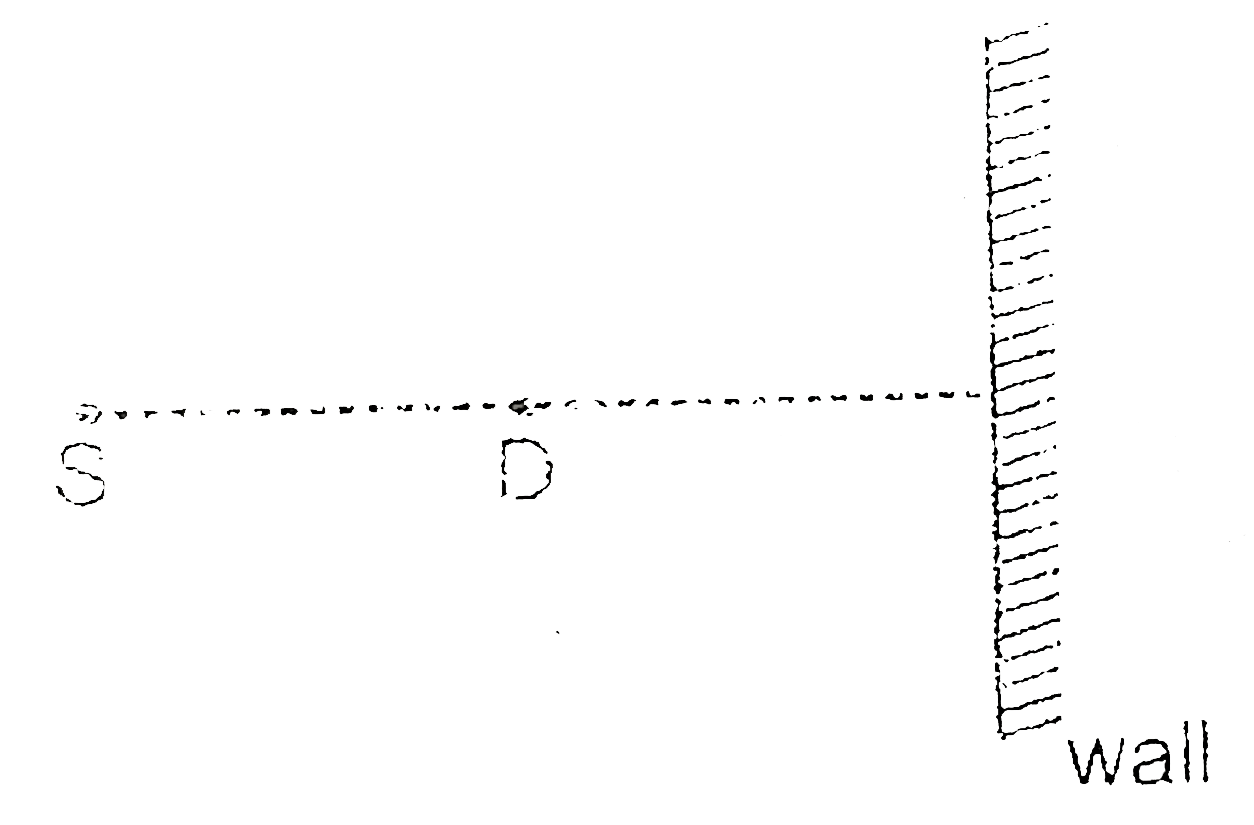sound singal is sent through a compostie tube as shown in the figure. The radius of the semicrcular portion of the tube is r, speed of sound in air is v, the source of sound is capable of giving varied frequencies . If n is an integaer then frequnecy for maximum intensity is given by

nvr
nvr(π−2)
nvπr
nv(r−2)π
The correct Answer is:B
path difference =πr−2r
ΔS=r(π−2),nλ=ΔS
for constructive interference
nλ=r(π−2),λ=r(π−2)n,n=Vλ=Vnr(π−2)
Topper's Solved these Questions
- SOUND WAVESBOOK - RESONANCE ENGLISHCHAPTER - SOUND WAVESEXERCISE - Exercise- 2 PART - I
24 Videos
- SOUND WAVESBOOK - RESONANCE ENGLISHCHAPTER - SOUND WAVESEXERCISE - Exercise- 2 PART - II
20 Videos
- SOUND WAVESBOOK - RESONANCE ENGLISHCHAPTER - SOUND WAVESEXERCISE - Exercise- 1 PART - I
34 Videos
- SIMPLE HARMONIC MOTIONBOOK - RESONANCE ENGLISHCHAPTER - SIMPLE HARMONIC MOTIONEXERCISE - Exercise
28 Videos
- STRING WAVESBOOK - RESONANCE ENGLISHCHAPTER - STRING WAVESEXERCISE - Exercise
32 Videos
Similar Questions
A sound source capable of producing sound of variable frequencies is located at a distance of 1 m from a reflecting wall as shown in the figure. A detector D is lying at a point shown in the figure. The various distances are also indicated. If the speed of sound in air is 340 ms−1, find the frequencies of sound within the audible range, which will have maximum intensity at detector?

View SolutionFigure shows a tube structure in which a sound signal is sent from one end and is received at the other end. The semicircular part has a radius of 20.0 cm. The frequency of the sound source can be varied electronically between 1000 and 4000 Hz. Find the frequencies at which maxima of intensity are detected. The speed of sound in air =340ms−1.

View SolutionFigure shows a tube having sound source at one end and observe at other end. Source produces frequencies upto 10000Hz. Speed of sound is 400m/s. Find the frequencies at which person hears maximum intensity.

View SolutionFigure 7.75 shows a tube structure in which a sound signal is bent from one end and is received at the other end . The semicircular part has a radius of 20.0cm. The frequency of the sound source can be varied electronically between 1000and4000Hz. Find the frequencies at which maxima of intensity are detected. The speed of sound in air =340m/s.

View SolutionA closed organ pipe can vibrate at a minimum frequency of 500 Hz. Find the length of the tube. Speed of sound in air =340ms−1.
View SolutionIn a closed tube whose length can be altered by sliding one of the halves relative to other is shown in the figure. In the initial condition the dector detects minimum intensity. One of the tubes is then displaced by 5 cm, during this displacement detector detects maximum intensity for 10 times and then a minimum intensity when the displacement is complete. what is the wavelength of sound?

View SolutionTwo successive resonance frequencies in an open organ pipe are 1944 Hz and 2592 Hz. Find the length of the tube. The speed of sound in air is 324ms−1.
View SolutionA sound consists of four frequencies : 300Hz,600Hz,1200Hzand2400Hz. A sound 'filter' is made by passing this sound through a bifurcate pipe as shown . The sound wave has to travel a distance of 50cm more in the right branch - pipe than in the straight pipe. The speed of sound in air is 300m/s. Then , which of the following frequencies will be almost completely muffled or 'silenced' at the outlet?

View SolutionA car travels at a speed of 'a' towards a high wall. The driver sounds a horn of frequency 'n'. If V is the velocity of sound in air, frequency of reflected sound heard by the driver is
View SolutionA sound sources, detector and a movable wall are arranged as shown in figure. In this arrangement detectir us detacting the maximum intensity. If the speed of sound is 330m/s in air and frequency of source is 660Hz, then find the minimum distance by which the wall should be moved away from source, so that detector dtects minimmum intensity.

View Solution
